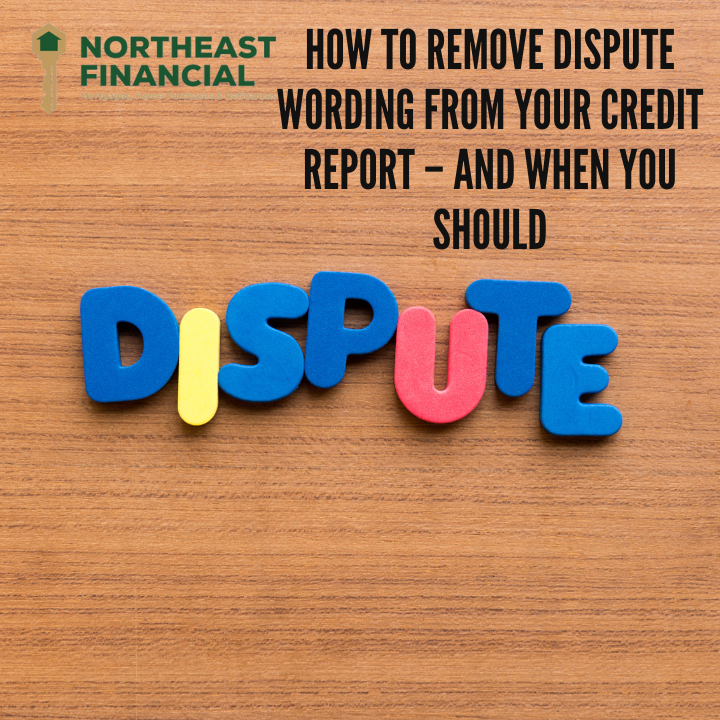
When applying for a mortgage, unexpected credit report issues can derail your loan approval. One such issue is dispute wording on your credit report. While disputing inaccurate information is a consumer right, removing dispute wording improperly can cause more harm than good.
How Does Dispute Wording Get on Your Credit Report?
Dispute wording can be added to your credit report in several ways:
- Direct contact with creditors – If you question an account’s accuracy, the creditor may mark it as disputed.
- Credit bureau disputes – When you formally dispute an account with Experian, Equifax, or TransUnion, the bureau may flag it.
- Credit repair services – Some credit repair companies send mass disputes to creditors, marking multiple accounts as disputed.
Why Removing Dispute Wording Can Hurt Your Credit Score
Disputed accounts are sometimes excluded from FICO score calculations. If an account has negative information, this may improve your score. However, when dispute wording is removed, the account is factored into your score again, potentially causing a significant drop.
For example, John and Sarah Mitchell (not their real names) were approved for a mortgage but later denied after their credit score dropped 50 points when they removed dispute wording from two minor accounts. Their lender had incorrectly advised them to remove all disputes, even though it wasn’t necessary for their loan.
 When Should You Remove Dispute Wording?
When Should You Remove Dispute Wording?
Removing dispute wording may be necessary if:
- The mortgage underwriting guidelines require it – Some loan programs, such as FHA, VA, and USDA, have specific rules on dispute wording.
- It will improve your credit score – In some cases, removing dispute wording from a positive account may increase your score.
However, removing dispute wording on charged-off accounts with no balance can severely damage your score. Always verify with your lender before making changes.
Step-by-Step Guide to Removing Dispute Wording
If you determine dispute wording must be removed, follow these steps:
1. Contact the Creditor (Data Furnisher)
- Call the creditor and ask if the account is marked as disputed in their system.
- Request they remove the dispute wording, explaining it is preventing mortgage approval.
- Confirm in a follow-up call a few days later.
- Important: If a collection agency demands payment to remove dispute wording, they are violating the Fair Debt Collection Practices Act.
2. Contact the Credit Bureaus
- Obtain a credit report directly from the bureau (Experian, Equifax, or TransUnion).
- Identify disputed accounts by checking the notes section for terms like “dispute.”
- Call the bureau and request dispute wording removal, stating you no longer dispute the account.
- Monitor your report to confirm the changes.
Avoiding Common Pitfalls
- Do not indiscriminately remove all disputes – Some disputed accounts may not affect underwriting.
- Consult an expert before making changes – A mortgage and credit professional can assess whether removal is necessary.
- Know your loan program’s requirements – Conventional, FHA, VA, and USDA loans have different dispute handling rules.
Get Expert Help
If you’re unsure about dispute wording on your credit report, consult a credit professional before making changes. Making the wrong move can mean the difference between loan approval and denial.
Northeast Financial is a mortgage company, and while we can help borrowers navigate what disputes need to be removed, borrowers should also seek the advice of a reputable credit repair company if they have more questions about removing disputes. For mortgage guidance, contact Northeast Financial to ensure you’re on the right track toward homeownership.



